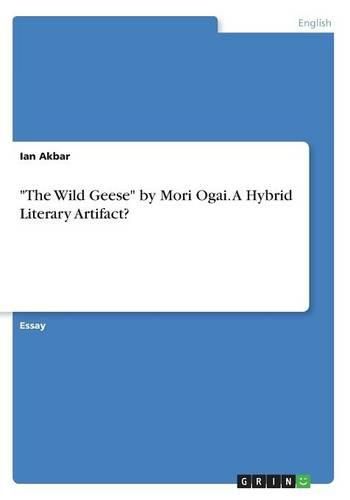Readings Newsletter
Become a Readings Member to make your shopping experience even easier.
Sign in or sign up for free!
You’re not far away from qualifying for FREE standard shipping within Australia
You’ve qualified for FREE standard shipping within Australia
The cart is loading…






Essay from the year 2004 in the subject English Language and Literature Studies - Literature, language: English, abstract: The Meiji period from 1868 to 1912, in Japan, was a time of rapid adoption of Western/European styles, products and practices in an attempt to be more modern. Indeed, it appears that according to Varley, the terms ‘Western and 'modern’ were thought of as synonymous. Accordingly, Mori Ogai’s The Wild Geese is representative of that particular historical period; the transition from the Tokugawa period (1603 - 1867) to the Meiji period (1868 - 1912), and therefore by definition can be considered an artifact of that period insofar as it consistently, as will be demonstrated, presents examples of this particular historical period. In addition, in terms of hybridity, which is defined as something heterogeneous in origin or composition, this paper will also illustrate that this novel possesses elements of both the Japanese and the Western novel, of the time, and, therefore, can properly be referred to as a hybrid literary artifact.
$9.00 standard shipping within Australia
FREE standard shipping within Australia for orders over $100.00
Express & International shipping calculated at checkout
Essay from the year 2004 in the subject English Language and Literature Studies - Literature, language: English, abstract: The Meiji period from 1868 to 1912, in Japan, was a time of rapid adoption of Western/European styles, products and practices in an attempt to be more modern. Indeed, it appears that according to Varley, the terms ‘Western and 'modern’ were thought of as synonymous. Accordingly, Mori Ogai’s The Wild Geese is representative of that particular historical period; the transition from the Tokugawa period (1603 - 1867) to the Meiji period (1868 - 1912), and therefore by definition can be considered an artifact of that period insofar as it consistently, as will be demonstrated, presents examples of this particular historical period. In addition, in terms of hybridity, which is defined as something heterogeneous in origin or composition, this paper will also illustrate that this novel possesses elements of both the Japanese and the Western novel, of the time, and, therefore, can properly be referred to as a hybrid literary artifact.